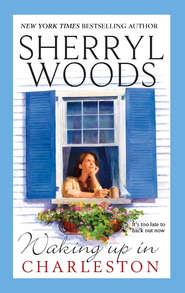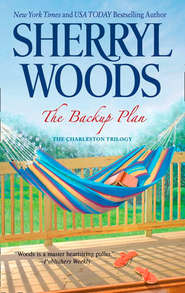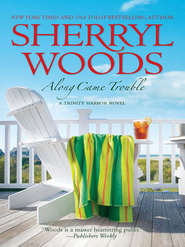По всем вопросам обращайтесь на: info@litportal.ru
(©) 2003-2024.
✖
A Small Town Love Story: Colonial Beach, Virginia
Настройки чтения
Размер шрифта
Высота строк
Поля
But both women see the churches as real anchors to the community for the members of their congregations. Many have food pantries, some have thrift shops; almost all hold events such as bazaars and dinners that draw neighbors regardless of their own denominations.
When asked about memorable characters in town, they mention everyone’s favorite, Mattie Hopkins, who, with her husband, owned a small neighborhood store. It was well known for its jam-packed shewlves and for Mattie’s willingness to turn a blind eye when it came to selling beer to young people without checking IDs.
Jessie at the Bank of Westmoreland, 1948
Everyone seems to remember Mattie, walking to church in her tennis shoes with taps on them. Though she attended St. Mary’s Episcopal Church, Mattie always stopped across the street at the Baptist Church, sat on the steps and changed into her “good” shoes before crossing the street to St. Mary’s.
And, recalls Jessie, who worked at the Bank of Westmoreland for forty-four years, Mattie would always bring her store deposits to the bank tucked into her bra.
Mention the Bank of Westmoreland and Jessie’s eyes get misty. “I hope I never see the day that building is torn down.”
Standing on a corner in what was once the heart of downtown Colonial Beach, where the street was lined with crowds of tourists and locals every Saturday morning to shop at the A&P, the bakery or hardware store or to pick up mail at the post office, the Bank of Westmoreland, which was built in 1904, became Colonial Beach town offices for a time. The building was vacated several years ago, but many want to see it given the historic designation it deserves and used in some appropriate way to maintain the vital role it once played in the community.
Like so many others in town, the two friends lament some changes and embrace others. No matter what, though, neither would live anywhere else.
Donald and Jessie Hall
SERVING COMMUNITY AND COUNTRY:
Carlton Hudson and Pat Fitzgerald
On his eighty-eighth birthday with a pineapple upside-down cake awaiting him, Carlton Hudson sat in the Colonial Beach Volunteer Rescue Squad Building and reminisced, not just about his years of volunteering with the squad and the fire department but his military service, as well. Like so many others in town, he takes pride in having served his country.
With him on this morning is Pat Fitzgerald, whose volunteer record with the rescue squad has earned her repeated honors locally and in the region.
“Sometimes I think I’ve seen more of Pat over the years than I did my wife,” Carlton says.
His ties to the squad go back to 1950, when he can remember going on calls, when they had to dig in their own pockets to get gas money to run the ambulances to the hospital in Fredericksburg. Bucket drives in town to fund needed supplies or buy new equipment were the norm for many years, with the town kicking in some additional funding.
Pat, who’s now retired from her career as a physical education teacher, driving instructor and coach in the schools, can remember being called away from school many times to answer emergency calls. She took calls at night, as well.
At one point, while Carlton was driving a truck for Norman Oil, he got an emergency call and ditched the truck on the side of the street so that he could shift into volunteer mode and handle the emergency. The passing fire truck stopped so he could jump onboard.
Eventually employers tired of losing staff to these volunteer duties, and the town and county combined to bring in paid workers. Staffing for both the fire department and the rescue squad continues to be supplemented by dedicated volunteers, with each group supported by active ladies auxiliaries who do their share to see that funding needs are met.
1955 Rescue Squad: Gander Frank, Vaughan Drummond, Mac Coates
Colonial Beach Rescue Squad building, 1950s
Colonial Beach Rescue Squad: C. Hudson, E. Moore, E. Fenwick, C. Lee, C. Lee and E. Baird (from left to right)
Carlton and Pat both admit it’s not always easy taking calls when the emergency involves people they know well in the community. Pat recalls going to the scene of a fire at Carlton’s house, in fact, and racing around to the back of the house to show firefighters where to find her longtime friend.
“All Carlton could talk about was the fact that he wasn’t dressed,” she remembers. “I just kept telling him we had to get out of there.”
Hospital workers are always pleased when the volunteers come in with a patient, she says. “Often we know their history. That’s the positive side of it.”
But if Carlton is proud of the years he spent taking calls and driving the ambulance or a fire truck, he’s even more proud of the years he served in Korea.
He was assigned to the motor pool. “If one of the jeeps broke down, I was sent to deal with it.”
He remembers a staff meeting in which his first lieutenant stood up and announced Carlton would be taking over the motor pool. “Two months later he called me back in and said it was in better shape than it had been in years.”
Not only had he kept the equipment in top working condition, he’d improved the record-keeping, too. “I had four of the best mechanics you could find and the best generator man. We got that motor pool straight,” he says proudly.
Colonial Beach Rescue Squad
Colonial Beach Rescue Squad, 1950s
Colonial Beach Rescue Squad, 1969
Vintage Fire Truck
Colonial Beach Rescue Squad, 1955
Colonial Beach Rescue Squad, 1955
At one memorable inspection, he recalls that though they did pass, points were taken off for one thing. “There was grease underneath our fingernails.”
Вы ознакомились с фрагментом книги.
Приобретайте полный текст книги у нашего партнера:
Приобретайте полный текст книги у нашего партнера:











